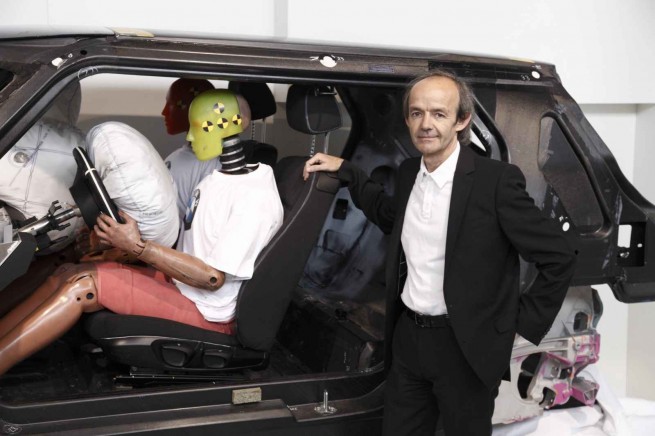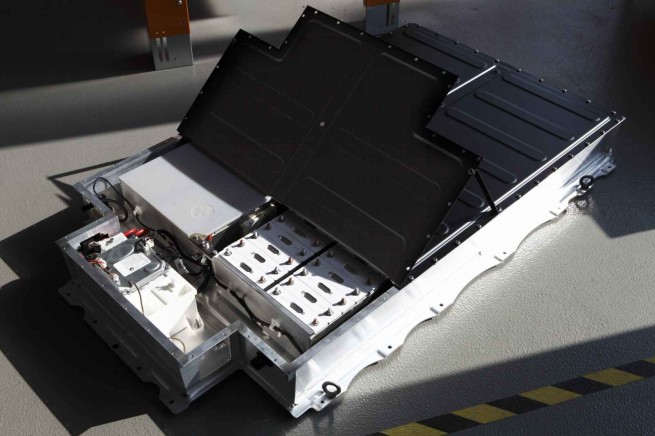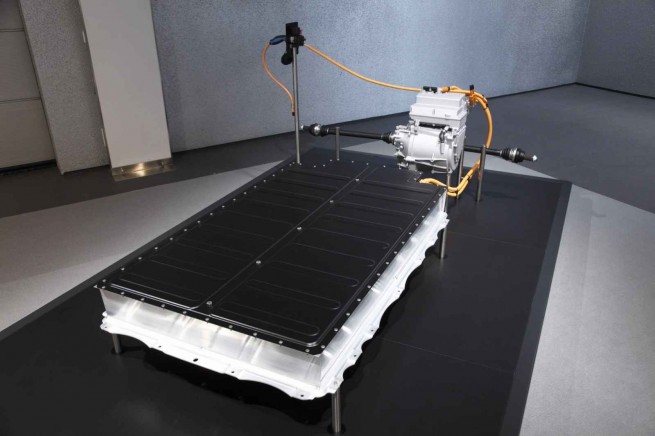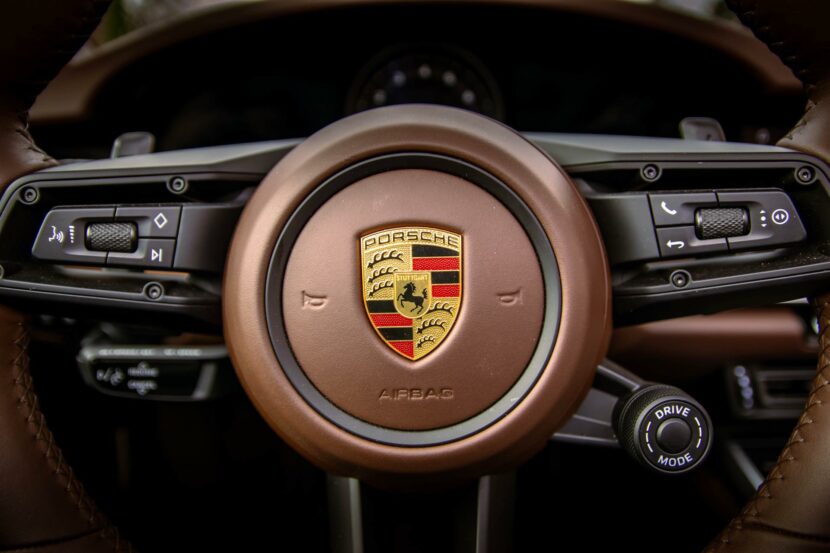While attending in Munich the Innovation Days around mobility of the future, our sister-magazine BimmerToday had the opportunity to speak in detail with the project leader of Project i program. Ulrich Kranz is the head of a team that is currently working on the possible forms of future mobility, and among other things, on the development of the Megacity Vehicle.
MCV is purely an electric powered vehicle, about four meters long which provides enough room for four people and can be used as a city car, thanks to the completely emission-free electric motor. The Megacity Vehicle, its final name has not been established, is built with a comprehensive lightweight approach and is designed from the ground up for the use with an electric motor.
Unlike electric conversion cars, which were originally intended for an internal combustion engine – as MINI E and the BMW ActiveE- the MCVs offer distinct advantages. The interior space in the electric conversion cars is limited due to the inclusion of batteries, electric motor and suitable power electronics, and therefore changes are inevitable for security reasons.
BimmerToday: Mr. Kranz, you told us earlier that Project i is on its way to provide sustainable mobility. In what exactly do you see this pioneering work?
Ulrich Kranz: What we consider pioneering work is the fact that we are entering new technologies, new vehicle architectures, but also entering in new production concepts and new distribution concepts. We do this by first looking at what is there today, while asking critical questions, such as which processes we can improve for greater sustainability. For these issues, we have sought out specialists who can really think ‘outside of the box’ in the Think Tank Project i, but of course, without losing sight of practicality.
BimmerToday: So, Project i is more about the obvious rather than the actual vehicle?
Ulrich Kranz: Yes, that begins with the selection of raw materials, raw material suppliers and the resulting logistics processes, production processes and design processes. The sales and marketing discussions are also noted of course, just like the issue of recycling. We want to reuse all components and aim to use a second phase, also at the final recycling. We therefore consider the overall framework for a coherent, sustainable system.
BimmerToday: Particularly the issue of recycling batteries is likely to cause problems. What solutions do you have ready at hand?
Ulrich Kranz: One of the points is that the energy producers, thanks to some conscience political pressure, have increased investment in renewable energy. Wind and solar energy have always had a problem of storing energy when it is not retrieved in the moment. Here for example, one could use the used batteries from the – hopefully many – electric vehicles, in order to use them as stationary memory in a wind power plant.
It becomes even clearer that the battery is not defective at the end of its life cycle, but can only store less energy. A battery is still useful in such applications as a stationary battery.
In the event that it really comes down to recycling, with our partner SB LiMotive, we have already planned the construction of a cell that makes it possible to separate the expensive materials and reuse them – this will happen only at the absolute end of life when the battery can no longer be reused.
BimmerToday: What factors are the ones who make the step to electric vehicles so inevitable? After electric mobility was viewed as less interesting a few years back, it seems that in the meantime has become a fundamental change of heart.
Ulrich Kranz: Of course, several factors play a role, but one key point are the batteries. We have been working since 1970 on this and with electric motors and have tried all sorts of possibilities with battery technologies, but all they had at least one serious problem: either the breadth or the cycle stability was inappropriate. As with the first cell phones or laptops, the battery always had to be completely discharged, in order to avoid memory effects, which is more difficult in the automotive sector.
It was thanks to the lithium-ion technology, which only came into series production a few years ago, where the first breakthroughs were made. You can charge the battery whenever you’re near a charger, the battery has no memory effect and works in a very wide temperature range. Another factor is that it possible to have such a vehicle, in extreme cases, left unused for months, without the battery discharging itself. These things have led to an introduction to electric vehicles that now make sense.
Then there is the whole topic of changing values, the environment, CO ², Global Warming, which has now resulted in all parts of the world on political decisions in this direction.
BimmerToday: The Mega City Vehicle is aimed primarily at an urban audience. What are the special characteristics of this target group and where and in what way have you collected your knowledge?
Ulrich Kranz: We have visited the major cities in Asia, the U.S. and Europe, and interviewed people who live in the city and commute to work in a vehicle. The question was about what people like on their daily trip to work, and what they do not. We naturally try to avoid things that were perceived less positivitely and take them into consideration early on in the process.
We were told, among other things, that a small vehicle is not expected. Instead, you want a solid and high quality vehicle. The challenge for us as car manufacturers is then to solve these problems without having the customer give up their beloved necessities. The subjects of sustainability and responsibility must always be taken into account, because especially in the cities, a constant increase in population is experienced. This raises the question of how to connect a vehicle to infrastructure and public transport.
Another consideration also goes in the direction that the Megacity Vehicle is purchased for everyday life and should ideally be equipped for 330 days per year, for vacations and other longer trips, so the car manufacturers would have to provide the vehicle with appropriate mobility packages.
BimmerToday: You have already mentioned the infrastructure that leads us directly to the range factor. What knowledge have you already collected in regards to the infrastructure required by the MINI E and what do you expect for the Megacity Vehicle?
Ulrich Kranz: MINI E proves an important point, customers will not accept a range less than 100km, 150 km is seen as Okay, 200 km is considered optimum value. This for us, of course, is a window in which we want to move around in and it is also input for the Megacity Vehicle.
Furthermore, it was also clear that the reduced range compared to a vehicle with a combustion engine will also lead to the assumption that it requires a lot of charging stations under this circumstance. After a few weeks of use, the topic was no longer an issue, because it became apparant that it is sufficient to fully charge the batteries two or three times per week in the garage. “Gas stations” are only needed when staying at a location for a longer period of time: at work or in their own house. On average, the vehicles stay in such places for more than five hours and there is no demand from the customer’s point of view for a fast charge feature.
BimmerToday: There is also the concept of changing batteries, apparently which BMW decided against. How was this step reached?
Ulrich Kranz: For us, the battery is an integral part of vehicle architecture and we have also chosen an architecture in which we can always use those battery cells to have an optimum efficiency. Although we buy the cells, the battery and the battery management is done in house.
A quick practical change would be ruled out by changing batteries, because this technique only counts if they are used for many years. Since there currently is a lot of movement in the field of cell technology, we have not considered it strategically useful to fixate on one concept over the years to establish a plan. We would rather have the flexibility to always integrate the best cell.
BimmerToday: Is it conceivable, for example, that a new battery technology can be part of a facelift, if there are bigger leaps in development?
Ulrich Kranz: We monitor the market closely and of course talk with our partner, behind which worldwide firm Samsung stands. We have selected a very good battery and now want to bring it into the series, and naturally we want to set an industry standard, which should then increase the quantities.
BimmerToday: We know that the Megacity vehicle will have a rear engine and rear wheel drive. After just returning back from a test drive with the MINI E, it seems likely that the lack of traction could have played a role in the decision of front-wheel drive combination with the massive torque of the electric motor from idle speed. Was there any negative customer feedback here about too much influence in the steering?
Ulrich Kranz: If you have a drive that offers a lot of torque at low speed, traction is of course always an issue. On a vehicle with rear engine and rear wheel drive, of course, you benefit from the dynamic axle load distribution and have significantly more power to the pavement. But this is only one of the points, because even in the interior, we wanted to create a different sense of space, which is supported by the rear placed engine. There are also issues such as crash safety, as these can be rear-engined design differently.
BimmerToday: Which parts of the Megacity Vehicle will be developed by BMW and which are going to be ‘just’ purchased?
Ulrich Kranz: I cannot name all the suppliers, but we definitely want to keep all the technologies that are new, in house altogether. The fields where we have the know-how are the essential components and systems: battery, battery management, power electronics, electric motors, transmissions, and of course the theme CFK (carbon-fiber) and chassis.
BimmerToday: You have already addressed CFK, can you talk about the desired vehicle weight?
Ulrich Kranz: We have the use of carbon fiber and aluminum front through the electric drive and batteries, with the lightweight measures to compensate for the extra weight. Of course, a reduction in weight triggers for example, 100 kilograms in the passenger compartment of a spiral, because they can be dimensioned less in some other parts .Overall, we can compensate for this with 250 through 350 kilograms.
BimmerToday: Can you say something about the price?
Ulrich Kranz: No. The price depends on how much we can go into the bulk. The entire technology is not cheap, but as with any new technology is a question of quantity. The more other producers enter this market, the more likely for the volume to grow rapidly. One can compare this with the first computers, or the first cell phones, because they were initially very expensive and became cheaper as volume increased.
BimmerToday: What do you consider to be the decisive feature for the Megacity Vehicle that BMW would be able to inspire their customers – possibly also in contrast to comparable models from competitors?
Ulrich Kranz: We can not comment on the competition at the moment, because there are not enough vehicles in this segment, but we have already confirmed that we will run it as a sub-brand of BMW, therefore, it must offer the agility and driving dynamics of a BMW. The architecture is new and emphasizes both the appearance and in the interior of the electric driving.
We believe that we can reach a proper course, and offer a high quality premium product. This is of course the claim of BMW. With the sub-brand, we can also do more daring things and here, you can look forward to some surprises.









































































